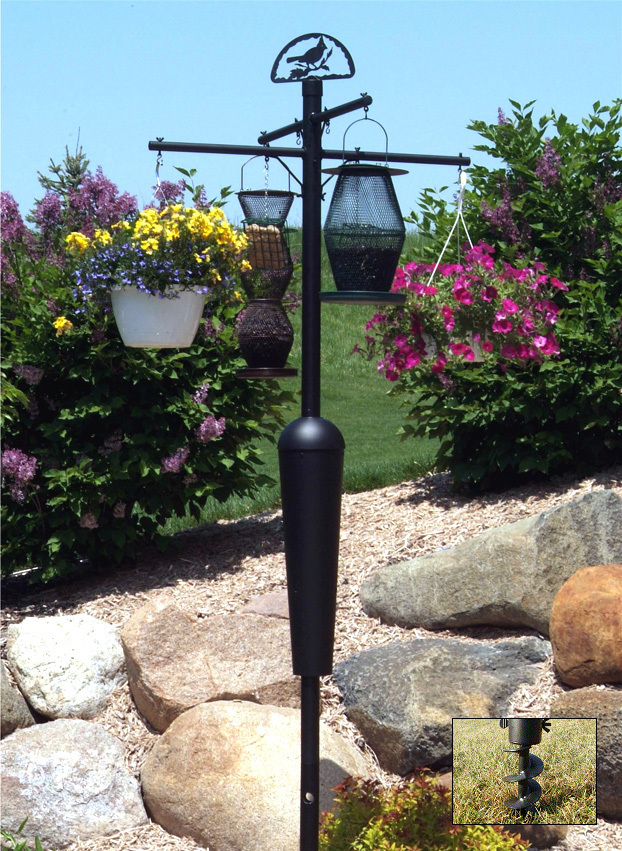The Best Bird Feeder Buying Guide of 2019
Apr 22nd 2019
Guide to the Best Types of Bird Feeders in 2019
Spring is in the air and that means the birds are coming back!
Bird watching is a great hobby that people of all ages can enjoy. It's educational and easy to do right in your own backyard! Whether you're a bird nerd or not, you'll enjoy many benefits from adding a bird feeder to your yard.
Check out our handy guide on different types of bird feeders to find the perfect one for you!
Choosing Between Different Types of Bird Feeders
There are several different types of bird feeders and they each have their pros and cons. Each of them attracts different types of birds to your yard, so first you'll have to decide what kind of birds you are looking to attract.
Do you want to attract songbirds? Perhaps you're looking to attract birds that eat bugs? Installing a bird feeder is a great way to boost the local bird population and cut down on insects. Birds like cardinals, chickadees, and nuthatches all eat backyard bugs in addition to seeds.
Check out the features of the different types of bird feeders below:
Hummingbird Feeders
Hummingbirds are amazing creatures! Did you know that hummingbirds beat their wings 80 times in one second! They are such small birds that you will rarely spot them when they are not feeding.
Hummingbird feeders are filled with the liquid nectar that hummingbirds crave. You can buy jugs of it, or you can make your own. Just don't use honey in your recipe. Honey can harbor bacteria that hurts hummingbirds.
Tray / Platform Feeders
Tray or platform feeders are open feeders of a simple design. They are for the most part just a dish for seed with a place for the birds to stand. They are easy to clean and attract many different types of birds.
They can be placed on the ground as well to attract ground-feeding birds. The downside to these feeders is that they are open to the rain. Seed can very easily get wet and need to be replaced sooner than other closed feeders.
Birds they draw:
- Northern Cardinals
- House Finches
- Jays
- Pigeons
- Starlings
- Song Sparrows
- Titmice
- Doves
- Goldfinches
- Juncos
Another downside of platform feeders is that they are easy to access for other types of wildlife like squirrels and deer. If you are only looking to feed the birds and don't want anything else hanging around, you may want to consider another type of feeder.
Hopper Feeders
Hopper feeders can hold a lot of seed, sometimes several pounds worth. They are enclosed and the seed comes out the bottom. These can be a great option if you don't want to refill your seed every few days.
Birds they draw:
- Titmice
- Grackles
- Jays
- Red-Winged Blackbirds
- House Finches
- Buntings
- Northern Cardinals
- Chickadees
You should empty and clean it monthly. They are better protected from the rain, but you should still keep an eye on your seed to make sure it isn't spoiled or moldy.
Window Feeders
Window feeders are small and usually made of plastic. They attached directly to your window with suction cups.
They are easy to clean and provide an awesome close-up view as birds perch and eat right at your window. They are also some of the safest bird feeders for avoiding window collisions.
Birds they draw:
- Titmice
- Some Sparrows
- Chickadees
- Finches
One drawback of these little feeders is that the birds sit directly in the seed, which means that you should clean and fill them every day.
Perching / Tube Feeders
These feeders are tubes that hang and have small perches for the birds next to ports that they can access the seed from. These feeders prevent larger birds like jays from competing for the seed as they are too big to be able to get to it. It gives the little guys a chance!
Birds they draw:
- Pine Siskins
- Goldfinches
- House Finches
- Redpolls
- Chickadees
Tube feeders do a better job than platform feeders at keeping seed dry. They are also fairly squirrel-proof, as long as they are reinforced with metal and not just cheap plastic. If you do have a problem with squirrels, they make special squirrel-deterrent mounting poles for bird feeders.
Thistle Feeders
Thistle feeders are a subset of tube feeders designed for very small nyjer seed. They have very small holes that only small birds can access, so they deter large birds and squirrels and attract an array of smaller birds.
Clinging / Suet Feeders
Suet feeders are metal cages that you place a brick of suet into. Suet is made from either peanut butter or rendered fat and seed formed into a brick. These cakes appeal to birds that like to grasp onto them and peck away at them.
Birds they attract:
- Woodpeckers
- Chickadees
- Bluebirds
- Warblers
- Wrens
- Nuthatches
- Titmice
- Jays
- Starlings
- Cardinals
Some people consider Starlings a nuisance and prefer not to attract large numbers of them. If this is the case for you, you can purchase a suet feeder that is only open from the bottom. Starlings are not good at feeding upside down, so they will leave these alone.
Be sure to keep an eye on your suet cakes. The hot sun can cause them to spoil.
Get Ready For a Backyard of Full of Birds
Now you are an expert on different types of bird feeders and well on your way to becoming an amateur ornithologist! Now all you need to do is get a bird feeder. Check out our selection and get ready to have your backyard filled with song!


